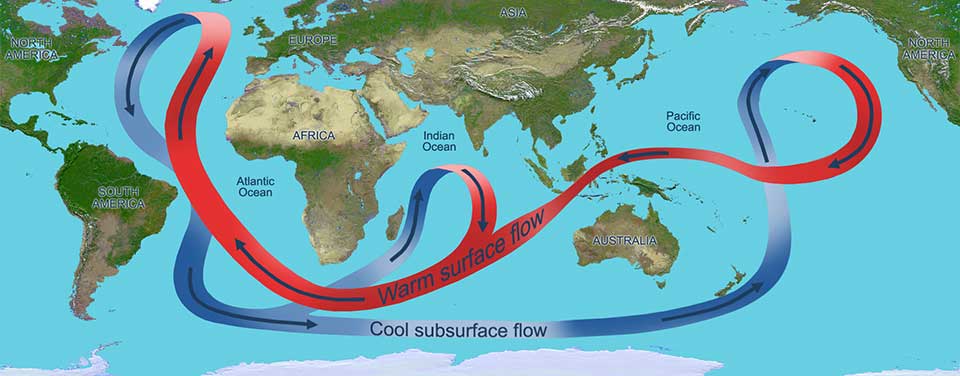Why does the ocean get colder at depth?
Cold, salty water sinks to the bottom of the ocean.

The great ocean conveyor moves water around the globe. Cold, salty water is dense and sinks to the bottom of the ocean while warm water is less dense and remains on the surface.
Cold water has a higher density than warm water. Water gets colder with depth because cold, salty ocean water sinks to the bottom of the ocean basins below the less dense warmer water near the surface. The sinking and transport of cold, salty water at depth combined with the wind-driven flow of warm water at the surface creates a complex pattern of ocean circulation called the 'global conveyor belt.'
In contrast, the Earth gets hotter and hotter at depth primarily because the energy of radioactive decay is leaking outwards from the core of the planet. While this geothermal energy is transferred to ocean water along the seafloor, the effect is so small that it's immeasurable by direct means.
Why? The actual amount of heat generated per square meter of Earth is quite small, especially compared to the amount of heat necessary to warm the ocean. Geothermal energy emanating from the Earth averages only about one tenth of a watt per square meter. At that rate of heat flow (without taking ocean currents into account), it would take well over a year just to heat the bottom meter of the ocean by one degree Centigrade.
However, the ocean is not standing still. Complex deep ocean currents driven by density variations in temperature and salinity are constantly replacing the bottom layer of ocean water with colder water.
Get Social
More Information
Did you know?
Winds drive currents that are at or near the ocean's surface. Near coastal areas winds tend to drive currents on a localized scale and can result in phenomena like coastal upwelling.

Last updated: 06/16/24
Author: NOAA
How to cite this article